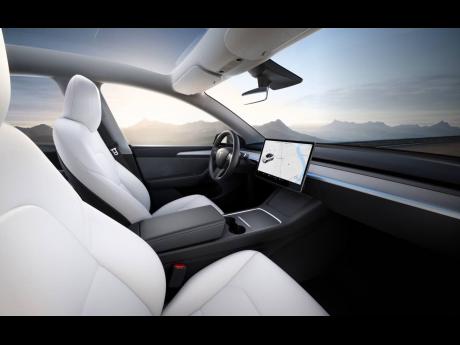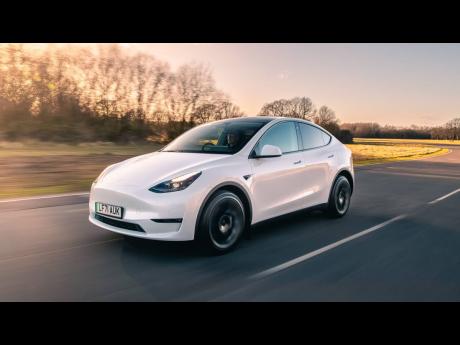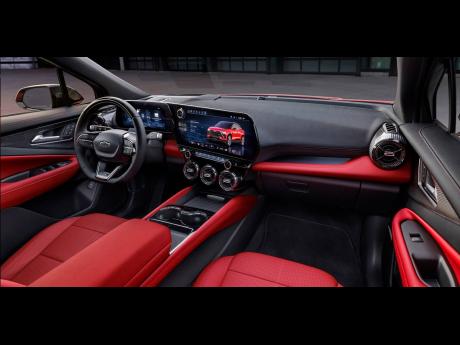2024 Chevrolet Blazer EV versus 2024 Tesla Model Y
The new 2024 Chevrolet Blazer EV is one of the most intriguing electric vehicle debuts this year. It is about the same size as Chevy’s midsize gas-powered Blazer SUV but otherwise has nothing mechanical in common. With roomy seating and lots of the latest technology features, it could appeal to people looking to go electric with their next SUV purchase.
However, the Blazer EV’s launch has been marred by some glitchy software issues. It is also competing with a host of other electric SUVs, the most popular being the Tesla Model Y. The automotive experts put these two electric SUVs in a head-to-head competition to determine if the upstart Blazer EV can unseat the Model Y.
RANGE AND CHARGING
The EPA estimates that the dual-motor Blazer EV can go about 279 miles on a single charge. That compares well with a number of similarly sized and priced electric SUVs. Even better, Edmunds’ test vehicle managed to go 320 miles in its standardised real-world range test.
While official EPA estimates for the 2024 Model Y remain pending, the mechanically identical 2023 Model Y registered anywhere from 279 to 330 miles, depending on the version. Edmunds has found in our testing that Teslas typically post slightly less range than those EPA estimates. Notably, Tesla recently revised the Model Y’s advertised range on its website, which now stands at 260 to 310 miles. Essentially, shoppers should be satisfied that both the Blazer EV and Model Y are capable of going around 300 miles.
Charging is where the Model Y pulls ahead in this category. With the Model Y, you can stop and charge at Tesla’s extensive nationwide network of Supercharger fast-charging stations. While Tesla will eventually open its network up to other automakers, for now, Blazer EV owners will need to rely on other less convenient fast-charging locations such as Electrify America when charging on the go for road trips.
Winner: Tesla Model Y
PERFORMANCE AND COMFORT
The Chevrolet Blazer EV looks sporty, yet appearances are deceiving. In Edmunds’ testing, a dual-motor Blazer EV RS accelerated from zero to 60mph in 6.2 seconds. This is fine for everyday driving but well off the Model Y’s pace. On the upside, the Blazer EV has an impressively smooth and comfortable ride over bumps and ruts.
The Tesla Model Y is available in three trims. Of these, the dual-motor Performance model is the speed demon. It sprints from zero to 60mph in just 3.5 seconds. Unfortunately it also has a ride that feels like a hay wagon over cobblestones. Edmunds recommends the Model Y Long Range. It is still plenty quick and has a more comfortable ride though it is still not as cushy as the Blazer EV’s.
Winner: tie
TECHNOLOGY FEATURES
Each of these electric SUVs sports a large touchscreen in the centre of its dashboard. They both have high-resolution displays and accurate Google-based navigation. The problem is that both systems lack Apple CarPlay or Android Auto smartphone integration. That means that there is no way to integrate your phone’s apps into the touchscreen like you can with most other vehicles.
Tesla also places everything from climate settings to the speedometer into the centre touchscreen itself. The Blazer EV is less distracting to drive thanks to its digital instrument cluster in the driver’s line of sight and easy-to-reach dials and buttons.
Another advantage to the Blazer EV is its available Super Cruise hands-free driving aid. This system allows drivers to take their hands off the wheel on most US divided highways under certain conditions. The Model Y’s AutoPilot system works great on the highway for assisted lane keeping and adaptive cruise control but does not yet offer full hands-free driving. Tesla also offers a pricey Full Self-Driving Beta upgrade that allows these systems to operate on city streets, but overall, Edmunds has found Super Cruise to be easier and most enjoyable to use.
Winner: Chevrolet Blazer EV
FEATURES AND VALUE
With a starting price of around US$45,000, the base Tesla Model Y undercuts the least expensive Blazer EV by more than US$7,000. It is also worth noting that certain Model Y versions are still eligible for up to US$7,500 of federal tax credits.
Each of these EVs comes with a wide range of standard features. Despite costing more, an entry-level Blazer EV LT requires you to pay extra for desirable features such as heated front seats, a power liftgate, wireless device charging, and adaptive cruise control. These are standard on the Tesla Model Y.
Winner: Tesla Model Y






